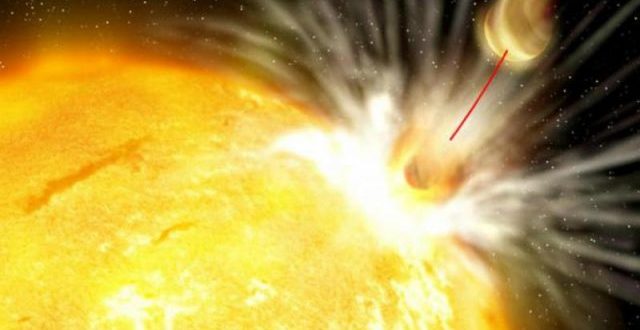Astronomers studied the star, known as HIP68468, as part of a project to discover planets that orbit solar twins.
An international team of researchers has discovered a planetary system with a host star similar to Earth’s sun, which could tell the history and connections between stars and their planets. The star, named HIP68468, is a twin star to the sun about 300 light-years away. Scientists believe, it may have swallowed one or more of its planets, based on lithium and refractory elements recently discovered near its surface.
The team, which included researchers from the University of Chicago, said that unlike the artificial planet-destroying Death Star in the movie “Star Wars”, this natural version could provide clues about how planetary systems evolve over time.
“It doesn’t mean that the sun will ‘eat’ the Earth any time soon,” said Jacob Bean, assistant professor of astronomy and astrophysics at UChicago and co-author of an Astronomy & Astrophysics article on the research. “But our discovery provides an indication that violent histories may be common for planetary systems, including our own.”
Unlike the artificial planet-destroying Death Star in the movie “Star Wars,” this natural version could provide clues about how planetary systems evolve over time.
Astronomers discovered the first planet orbiting a star other than the sun in 1995. Since then, more than two thousand exoplanets have been identified. Rare among them are planets that orbit a star similar to Earth’s sun. Due to their extreme similarity to the sun, these so-called solar twins are ideal targets for investigating the connections between stars and their planets.
Bean and his colleagues studied star HIP68468, which is 300 light years away, as part of a multi-year project to discover planets that orbit solar twins. It’s tricky to draw conclusions from a single system, cautioned Megan Bedell, a UChicago doctoral student who is co-author of the research and the lead planet finder for the collaboration. She said the team plans “to study more stars like this to see whether this is a common outcome of the planet formation process.”
Computer simulations show that billions of years from now, the accumulated gravitational tugs and pulls between planets will eventually cause Mercury to fall into the sun, said Debra Fischer, a professor of astronomy at Yale University who was not involved in the research. “This study of HIP68468 is a post-mortem of this process happening around another star similar to our sun. The discovery deepens our understanding of the evolution of planetary systems.”
Two planets discovered
Using the 3.6-meter telescope at La Silla Observatory in Chile, the research team of scientists from several continents discovered its first exoplanet in 2015. The more recent discovery needs to be confirmed, but includes two planet candidates—a super Neptune and a super Earth. Their orbits are surprisingly close to their host star, with one 50 percent more massive than Neptune and located at a Venus-like distance from its star. The other, the first super Earth around a solar twin, is three times the Earth’s mass and so close to its star that its orbit takes just three days.
“These two planets most likely didn’t form where we see them today,” Bedell said. Instead, they probably migrated inward from the outer parts of the planetary system. Other planets could have been ejected from the system—or ingested by their host star.
HIP68468’s composition points to a history of ingesting planets. It contains four times more lithium than would be expected for a star that is 6 billion years old, as well as a surplus of refractory elements—metals resistant to heat and that are abundant in rocky planets.
In the hot interior of stars like HIP68468 and the sun, lithium is consumed over time. Planets, on the other hand, preserve lithium because their inner temperatures are not high enough to destroy the element. As a result, when a star engulfs a planet, the lithium that the planet deposits in the stellar atmosphere stands out.
Taken together, the lithium and the engulfed rocky planet material in the atmosphere of HIP68468 is equivalent to the mass of six Earths.
“It can be very hard to know the history of a particular star, but once in a while we get lucky and find stars with chemical compositions that likely came from in-falling planets,” Fischer said. “That’s the case with HD68468. The chemical remains of one or more planets are smeared in its atmosphere.
“It’s as if we saw a cat sitting next to a bird cage,” she added. “If there are yellow feathers sticking out of the cat’s mouth, it’s a good bet that the cat swallowed a canary.”
Agencies/Canadajournal
 Canada Journal – News of the World Articles and videos to bring you the biggest Canadian news stories from across the country every day
Canada Journal – News of the World Articles and videos to bring you the biggest Canadian news stories from across the country every day




In roughly 1.5 billion years, the resulting radiation will make it impossible for anything for virtually anything to live on Earth, leaving our green and blue marble a lifeless, barren husk floating in the void. Happy holidays!
I thought the sun was gonna expand in to a red giant rather than stuck the planets in to it.
nice news…